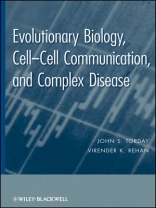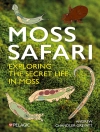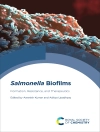An integrative view of the evolution of genetics and the natural
world
Even in this advanced age of genomics, the evolutionary process
of unicellular and multicellular organisms is continually in
debate. Evolutionary Biology, Cell-Cell Communication, and
Complex Disease challenges current wisdom by using physiology to
present an integrative view of the nature, origins, and evolution
of fundamental biological systems.
Providing a deeper understanding of the way genes relate to the
traits of living organisms, this book offers useful information
applying evolutionary biology, functional genomics, and cell
communication studies to complex disease. Examining the 4.5
billion-year evolution process from environment adaptations to
cell-cell communication to communication of genetic information for
reproduction, Evolutionary Biology hones in on the ‘why and how’ of
evolution by uniquely focusing on the cell as the smallest unit of
biologic structure and function.
Based on empirically derived data rather than association
studies, Evolutionary Biology covers:
* A model for forming testable hypotheses in complex disease
studies
* The integrating role played by the evolution of metabolism,
especially lipid metabolism
* The evolutionary continuum from development to homeostasis
* Regeneration and aging mediated by signaling molecules
Ambitious and game-changing Evolutionary Biology suggests that
biology began as a mechanism for reducing energy within the cell,
defying the Second Law of Thermodynamics. An ideal text for those
interested in forward thinking scientific study, the insights
presented in Evolutionary Biology help practitioners effectively
comprehend the evolutionary process.
Daftar Isi
Chapter 1. On the Cellular Origin of Vertebrates.
Chapter 2. Reducing Lung Physiology to its Molecular Phenotypes.
Chapter 3. A Cell-Molecular Strategy to Solving the Evolutionary Puzzle.
Chapter 4. On the Evolution of Cell-Cell Communication.
Chapter 5. How to Integrate Cell-Molecular Development, Homeostasis, Ecology and Evolutionary Biology – The ‘Missing Links’.
Chapter 6. From Cell-Cell Communication to the Evolution of Integrated Physiology.
Chapter 7. Exploiting Cell-Cell Communication Across Space-Time to Deconstruct Evolution.
Chapter 8. The Periodic Table of Biology.
Chapter 9. Value Added by Thinking in Terms of the Cell-Cell Communication Model for Evolution.
Chapter 10. Cell-Cell Communication Maintenance and Breakdown Represent ‘Health’ and ‘Disease’, Respectively.
Tentang Penulis
John Torday, Ph D, is Professor of Pediatrics and Ob/Gyn
at Harbor-UCLA Medical Center where he is also Director of The
Henry L. Guenther Laboratory for Cell/Molecular Research and
Director of Laboratory for Evolutionary Preventive Medicine.
He is the author of over 130 peer-reviewed articles, Dr. Torday
specializes in pre and neo-natal lung development, particularly
regarding cell-cell communication within this pathway.
V.K. Rehan, MD, is Professor of Pediatrics and
Director of the Neonatal Intensive Care Unit at Harbor-UCLA Medical
Center. The recipient of numerous teaching honors, Dr. Rehan
is involved both in treating patients and continuing research on
neo and peri-natal respiratory issues and lung development.











